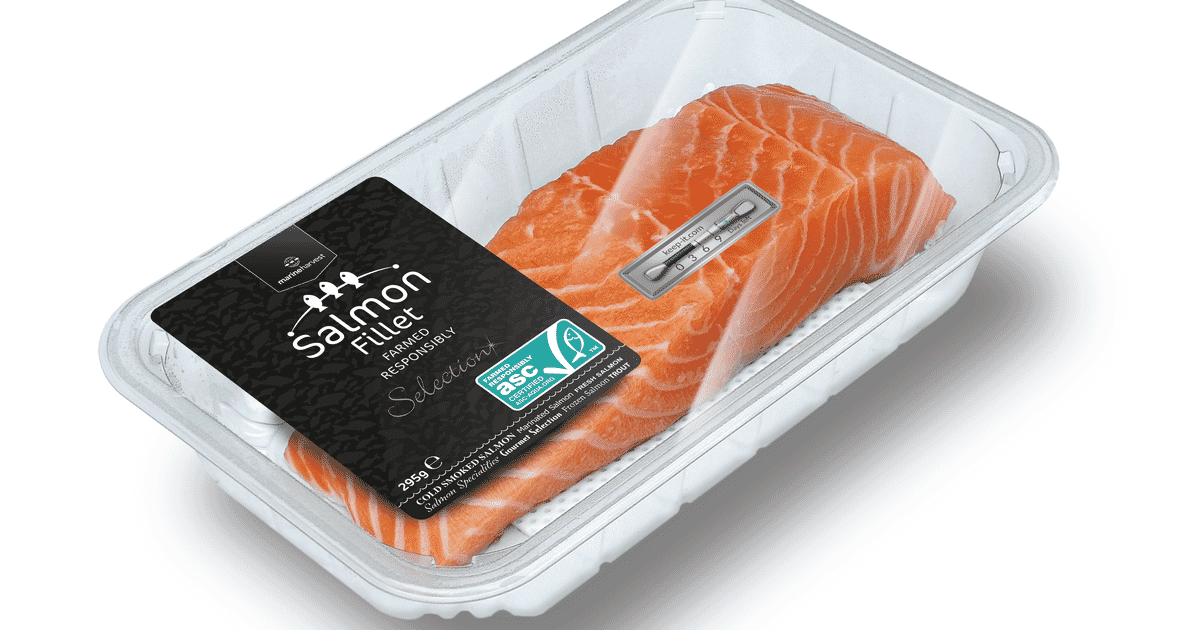וירוס הקורונה שורד על פני עורו של דג הסלמון במצב צונן כ-8 ימים
ידיעה זאת צריכה לעניין כל אזרח ישראלי ערב חגי ישראל הבאים עלינו לטובה.
בחגי ישראל, ובמיוחד בימים הנוראים, מסיבות של מסורת (“הייה לראש ולא לזנב”) , עולה צריכת הדגים ע”י אזרחי ישראל בחדות.
אמנם את המקום הראשון בצריכה תופס הדג “הפולני” – קרפיון אך בשנים האחרונות הולך וגודל חלקו של הסלמון הטרי והקפוא בסל הצריכה הישראלי ובדיוק מהסיבה הזאת חשוב לקרוא את מה שנאמר בכתבה זאת.
מחקר של אוניברסיטה סינית מגלה כי וירוס הקורונה שורד על פני עורו של הסלמון הצונן (שנקרא במחוזותינו – סלמון טרי) כ-8 ימים מה שמאפשר לווירוס להגדיל מאוד את תפוצתו ולחצות גבולות בקלות רבה.
וזאת הכתבה המתפרסמת באמצעי התקשורת העולמיים בנושא זה:
“מדענים מהאוניברסיטה החקלאית בדרום סין ובאקדמיה למדעי החקלאות בגואנגדונג – Guangdong Academy of Agricultural Sciences שבגואנגג’ואו -Guangzhou מצאו ראיות לכך שנגיף הקורונה יכול לשרוד במשך שמונה ימים בטמפרטורה משוערת של 39 מעלות פרנהייט (שווה ערך לכ-4 מעלות צלסיוס)
המחקר, שפורסם אודותיו השבוע ,ביום ראשון, טרם פורסם או נבדק על ידי עמיתים.
“דגים מזוהמים בווירוס מסוג SARS-CoV-2 ממדינה אחת ניתנים להעברה בקלות למדינה אחרת תוך שבוע, ובכך לשמש כאחד המקורות להפצת המחלה בצורה בינלאומית”, אמרו החוקרים.
“בניגוד לירקות ומזון אחר, יש להעביר, לאחסן ולמכור דגים בסביבה של טמפרטורה נמוכה”, נכתב בדו”ח. “דגים נמכרים בדרך כלל ברבעים בתנאי טמפרטורות נמוכות בהרבה מטמפרטורת החדר הרגילה. המשמעות היא שנגיף הצמוד על עור הדגים ונמכר בשוקי דגים או פירות ים יכול לשרוד לאורך זמן. ”
המחקר כפי שפורסם :
Running Title: Survival of salmon-attached SARS-CoV-2
ABSTRACT
Several outbreaks of COVID-19 were associated with seafood markets, raising concerns that
fish-attached SARS-CoV-2 may exhibit prolonged survival in low-temperature environments.
Here we showed that salmon-attached SARS-CoV-2 at 4o
C could remain infectious for more
than one week, suggesting that fish-attached SARS-CoV-2 may be a source of transmission.
Text
The first outbreak of COVID-19 in late 2019 and early 2020 was associated with the Huanan
Seafood Market in Wuhan, China, while the second outbreak of COVID-19 in June of 2020 was
associated with the Xinfadi Seafood Market in Beijing, China (1-2). Several groups in different
countries have identified SARS-CoV-2 in meat or meatpacking workers (3-7), raising concerns
that fish- or meat-attached SARS-CoV-2 could be a potential source of COVID-19 transmission.
Therefore, it is essential to determine the survival time of SARS-CoV-2 in the low-temperature
environment of seafood markets.
In this study, we detected the titer (50% tissue culture infectious dose/mL, TCID50/mL) of
viable SARS-CoV-2 attached on salmon or untreated SARS-CoV-2 in culture medium stored at
4°C, the temperature in refrigerators or cold rooms for the temporary storage of fish, or 25°C, the
regular room temperature, respectively, using end-point titration assay on Vero E6 cells as
described previously (8). As shown in Figure A and B, salmon-attached SARS-CoV-2 remained
viable at 4°C and 25°C for 8 and 2 days, respectively, while the untreated SARS-CoV-2 in
culture medium remained infectious at 4°C and 25°C for more than 8 days. SARS-CoV-2
attached on salmon or suspended in culture medium stored at 4°C remained viable for at least 8
days, while these stored at 25°C resulted in attenuating infectivity very quickly. The result from
the experiment on samples stored at 25°C is consistent with that reported by van Doremalen et al.
They showed that SARS-CoV-2 remained viable in aerosols, or on the surface of copper,
cardboard, stainless steel, and plastic, at 21~23°C and 40% relative humidity for 3 ~ 24 hours (8),
confirming that the loss of SARS-CoV-2 viability is associated with increased temperature.
Imported and exported fish must be transported under a low-temperature (e.g., 0 ~ 4°C)
environment. Under such condition, SARS-CoV-2-contaminated fish from one country can be
easily transported to another country within one week, thus serving as one of the sources for
international transmission of SARS-CoV-2.
Different from vegetables and other food, fish have to be transported, stored and sold under
a low-temperature environment. Fish are generally sold in quarters having temperatures much
lower than regular room temperature. This means that virus attached on fish skin and sold in fish
or seafood markets can survive for a long time.
In conclusion, fish-attached SARS-CoV-2 can survive for more than one week at 4°C, the
temperature of refrigerators, cold rooms, or transport carriers for storage of fish before selling in
the fish or seafood market. This calls for strict inspection or detection of SARS-CoV-2 as a
critical new protocol in fish importation and exportation before allowing sales.
About the Author
Dr. Dai is Associate Professor, South China Agricultural University. Her research interest is host
 antiviral immune response.
antiviral immune response.


